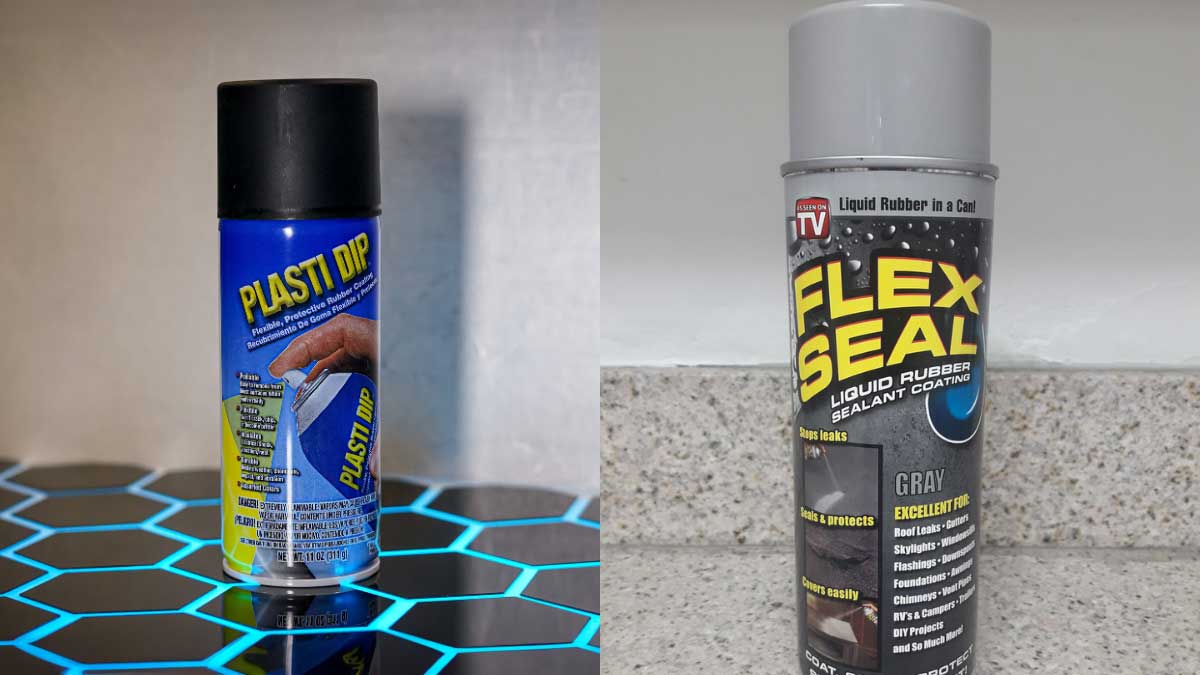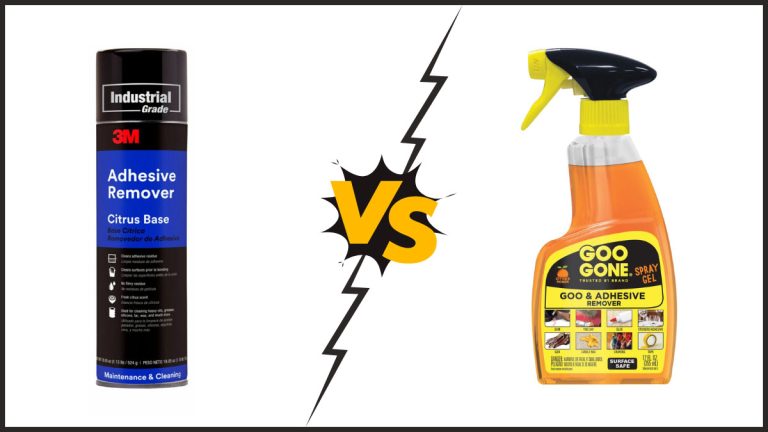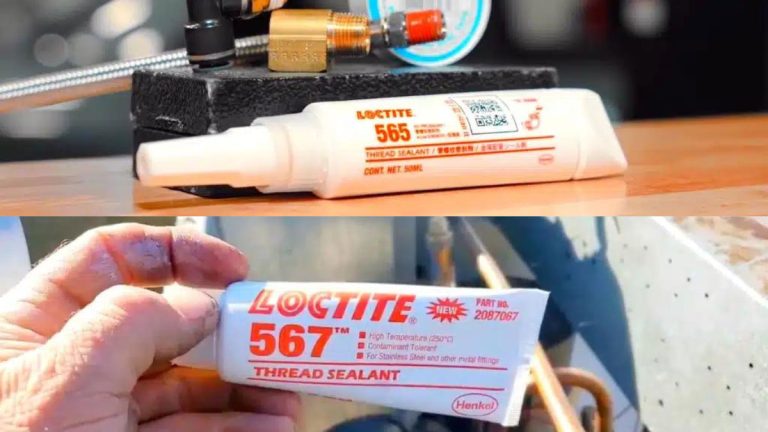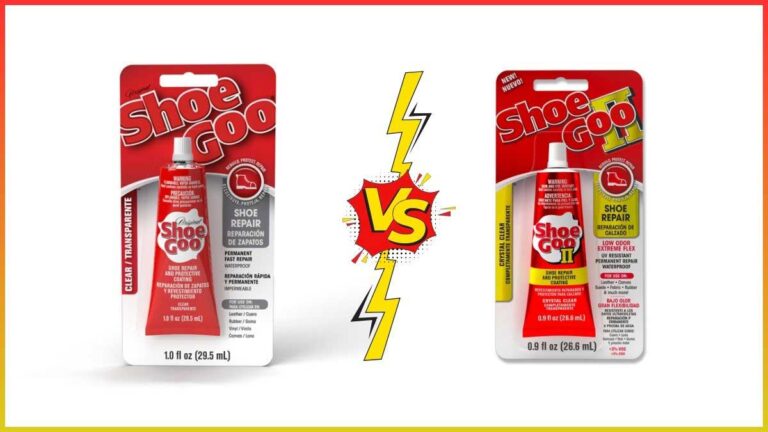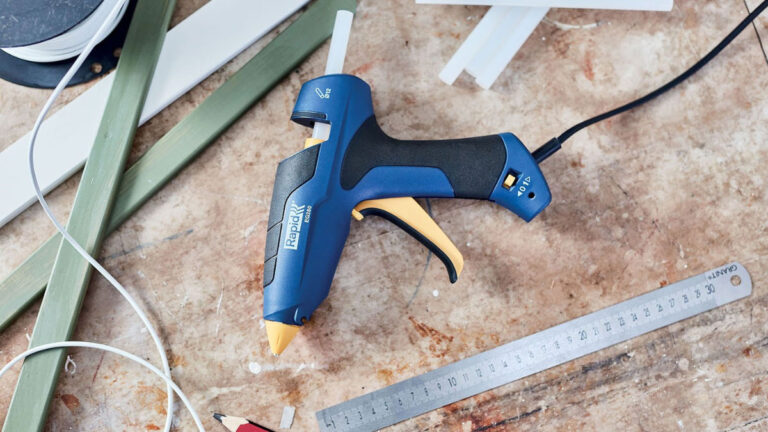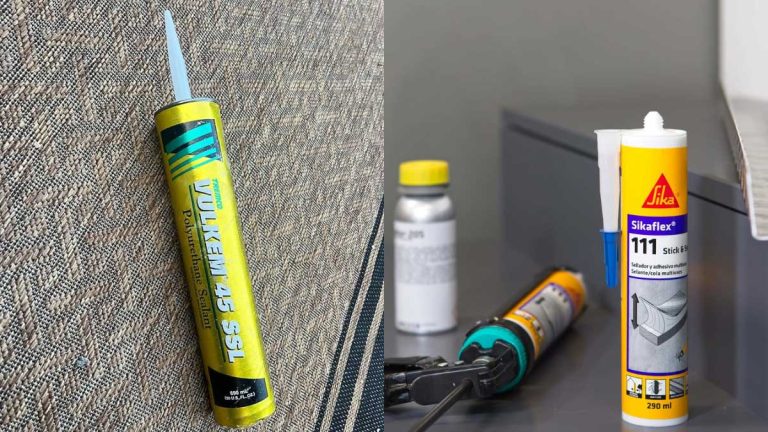Plasti Dip vs Flex Seal: Best Uses and Benefits Compared
When it comes to quick and effective DIY solutions for sealing and coating, two products often come to mind: Plasti Dip and Flex Seal. Whether you’re looking to protect your car’s rims or stop a pesky leak, understanding the strengths and weaknesses of each can save you time and money.
Plasti Dip offers a flexible, rubberized coating that’s perfect for a variety of applications, from automotive customization to tool grips. On the other hand, Flex Seal promises a watertight seal that can patch up leaks in a snap. But which one should you choose for your specific needs? Let’s jump into the key differences and see which product comes out on top.
Key Takeaways
- Plasti Dip and Flex Seal: Both products serve distinctive purposes, with Plasti Dip ideal for flexible, temporary solutions, and Flex Seal excelling in permanent, waterproofing repairs.
- Application and Drying: Plasti Dip dries faster (30 minutes to 4-6 hours) and is easier to remove, whereas Flex Seal takes longer (2-48 hours) for a full cure and provides a durable, watertight seal.
- Usage: Plasti Dip is commonly used for automotive detailing, tool coating, and crafts. Flex Seal is suited for fixing leaks, sealing cracks, and protecting outdoor equipment.
- Surface Compatibility: Plasti Dip works well on materials like EVA foam, providing a wide range of colors. Flex Seal adheres strongly to metal, wood, plastic, and masonry.
- Cost Efficiency: Plasti Dip typically costs more per can but covers multiple applications. Flex Seal is more affordable per can but may require multiple cans for extensive repairs.
Overview Of Both Products
Plasti Dip and Flex Seal are two popular rubber coating sealants used for various purposes, including home repairs, crafting, and protective coatings. Here is an overview of each product:
Plasti Dip
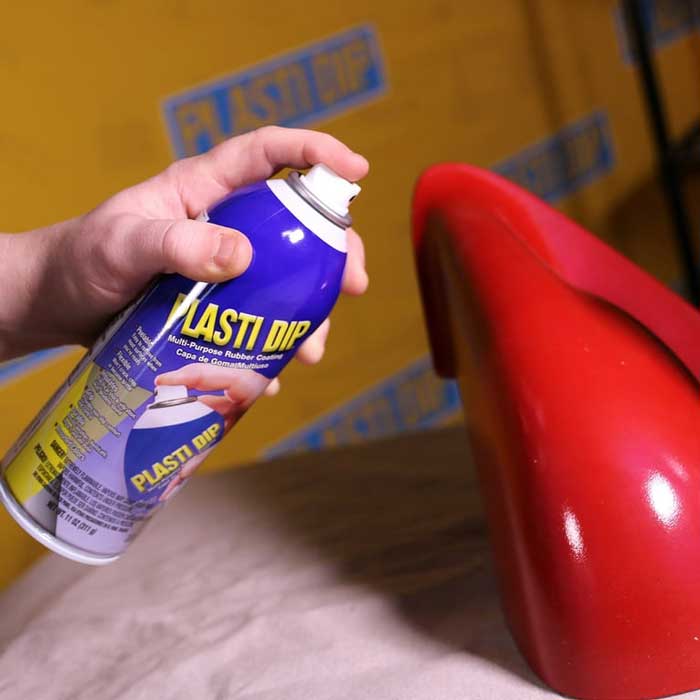
Application and Drying Time:
Plasti Dip dries much faster than Flex Seal, allowing it to be painted on after just 30 minutes. The full curing process takes 4-6 hours.
Texture and Feel:
Plasti Dip initially appears like paint but gains a rubbery feel as it dries. It is more flexible and can be easily peeled off, making it suitable for aesthetic coatings and arts and crafts projects.
Uses:
- Often used for car detailing
- Tool coating
- Various craft projects
- Available in a wider range of colors
Surface Compatibility:
Works well on EVA foam and other materials, but it is generally preferred for its ease of application and flexibility.
Flex Seal
Application and Drying Time:
Flex Seal takes longer to dry compared to Plasti Dip. Initial drying time is around 2 hours, with full curing taking 24-48 hours.
Texture and Feel:
Flex Seal provides a thick rubberized coating that forms a watertight seal as it dries. It is durable and bonds tightly to surfaces, making it suitable for repairs that require a strong hold.
Uses:
- Fixing leaks in gutters, pipes, and roofs
- Sealing cracks in foundations and walls
- Protecting outdoor equipment from moisture
- Available in a limited range of colors
Surface Compatibility:
Works well on surfaces like metal, wood, plastic, and masonry. It excels in sealing and waterproofing applications.
| Feature | Plasti Dip | Flex Seal |
|---|---|---|
| Initial Drying Time | 30 minutes | 2 hours |
| Full Curing Time | 4-6 hours | 24-48 hours |
| Texture | Rubber-like, flexible | Thick, watertight |
| Removability | Easily peelable | Permanent |
| Primary Uses | Automotive, tools, crafts | Leak repair, outdoor protection |
| Surface Compatibility | EVA foam, diverse materials | Metal, wood, plastic, masonry |
| Color Availability | Wide range | Limited range |
Understanding the strengths and specific applications of both Plasti Dip and Flex Seal can help you decide which product best suits your needs.
Features And Benefits
When choosing between Plasti Dip and Flex Seal, understanding each product’s features and benefits can guide your decision.
Plasti Dip Features
Application:
- Plasti Dip is a flexible rubber coating in a spray can.
- It’s applied by spraying the can about 20 centimeters away from the surface.
- Use even, overlapping coats.
- Typically, 2-3 coats are needed, with about half an hour between each coat.
Drying Time:
- It fully dries in about 4 hours.
- You can paint over it after 30 minutes.
Safety Precautions:
- Classified as hazardous.
- Use in a well-ventilated area.
- Wear a respirator, gloves, and eye protection due to its strong smell and potential health risks.
Cost:
- Approximately $30 per can, depending on the size.
- One can is sufficient for several applications.
Properties:
- Durable with excellent adhesive qualities.
- Resistant to weather elements.
- Remains stretchy and flexible over time.
Flex Seal Features
Application:
- Flex Seal is a liquid rubber sealant.
- It’s applied via a spray, brush, or pour.
- Requires even coverage to ensure a watertight seal.
- Often needs 2-3 coats, depending on the surface and severity of the repair.
Drying Time:
- Initial drying occurs in about 2 hours.
- Full curing can take 24-48 hours, depending on the thickness of application.
Safety Precautions:
- Considered less hazardous than Plasti Dip but still requires safe handling.
- Use in well-ventilated areas.
- Beneficial to wear gloves and eye protection.
Cost:
- Costs about $13-$18 per can.
- A single can usually suffices for small to medium repairs.
Properties:
- Creates a watertight, flexible seal.
- Effective for stopping leaks in pipes, roofs, and gutters.
- Adheres well on various surfaces, including metal, wood, and concrete.
Comparative Benefits
Versatility:
- Plasti Dip is ideal for automotive customization, tool grips, and craft projects.
- Flex Seal is best for sealing leaks in gutters, pipes, and roofs.
Durability:
- Plasti Dip offers long-lasting flexibility and resilience against weathering.
- Flex Seal provides a durable watertight seal that withstands harsh conditions.
Ease of Use:
- Plasti Dip requires more detailed application steps for an even finish.
- Flex Seal offers multiple application methods, simplifying minor repairs.
Cost Efficiency:
- Plasti Dip has a higher upfront cost but covers multiple applications.
- Flex Seal is more affordable per can but may require multiple cans for larger projects.
| Feature | Plasti Dip | Flex Seal |
|---|---|---|
| Application | Spray, 20 cm from surface | Spray, brush, or pour |
| Drying Time | 4 hours (full), 30 minutes (paintable) | 2 hours (initial), 24-48 hours (full) |
| Safety | Hazardous, use protective gear | Less hazardous, use protective gear |
| Cost | ~$30 per can | $13-$18 per can |
| Properties | Durable, flexible, weather-resistant | Watertight, adheres to multiple surfaces |
Understanding these features can help you select the appropriate product for your specific needs, ensuring successful application and desired outcomes.
Applications And Usage
Exploring the uses of Plasti Dip and Flex Seal helps you determine which product suits your project best. Here’s how you can use each product effectively:
Where to Use Plasti Dip
Versatile Uses:
- Car Detailing: Use Plasti Dip to customize car wheels, trim, and emblems with a temporary, peelable finish.
- Arts and Crafts: Ideal for DIY projects, creating a flexible, colorful coating on a variety of craft materials.
- Aesthetic Coating: Enhance the look and feel of items like tool handles, sporting goods, and household objects.
Surface Compatibility:
- Metal: Provides a protective and decorative coating.
- Wood: Suitable for both indoor and outdoor wooden items.
- EVA Foam: Widely used to seal and prime EVA foam for costumes and props due to its smooth application and adherence.
- Drying Time: Dries faster than Flex Seal, ready for painting in 30 minutes, fully cured in 4-6 hours.
Where to Use Flex Seal
Leak Sealing:
- Gutters: Quickly seal leaks in gutters to prevent water damage.
- Pipes: Ideal for fixing both indoor and outdoor pipe leaks.
- Roofs: Provides a temporary solution to small roof leaks, especially in emergency situations.
Surface Compatibility:
- Metal: Seals cracks and holes effectively.
- Wood: Waterproofs and protects wooden surfaces.
- Plastic and More: Adheres to a variety of surfaces, making it suitable for numerous applications.
Drying Time: Takes about 2 hours to dry initially, with full curing taking 24-48 hours.
Performance Comparison
A detailed comparison of Plasti Dip and Flex Seal demonstrates their respective strengths for specific tasks:
| Feature | Plasti Dip | Flex Seal |
|---|---|---|
| Primary Use | Aesthetic, customization | Leak sealing, waterproofing |
| Surface Types | Metal, wood, EVA foam | Metal, wood, plastic |
| Drying Time | 30 minutes to paint, 4-6 hours full cure | 2 hours initial, 24-48 hours full cure |
| Application Methods | Spray | Spray, brush, pour |
| Flexibility | Highly flexible, removable | Forms a watertight, permanent seal |
| Cost | Approximately $30 per can | $13-$18 per can |
| Durability | Weather-resistant, moderately durable | Extremely durable, watertight |
Utilizing these key features, you can choose the most appropriate product for your specific needs.
Durability And Longevity
Durability
Flex Seal: Flex Seal offers high durability with a solid, rubberized coating that effectively seals leaks and fills cracks. This product forms a strong, waterproof barrier that resists cracking or peeling for several years if applied correctly. Its robust nature makes it ideal for applications that require long-term, reliable sealing, such as repairing gutters, roofs, and pipes.
Plasti Dip: Plasti Dip, while durable, emphasizes flexibility over solidity. This makes it suitable for temporary applications and aesthetic coatings that might need frequent changes. It can withstand weather elements and physical wear but is easier to peel off compared to Flex Seal. This feature is advantageous for projects like automotive customization or crafting, where removability is essential.
Longevity
Flex Seal: Flex Seal requires around 24-48 hours to fully cure, depending on the thickness of the application, temperature, and humidity levels. Once it’s completely cured, Flex Seal provides a long-lasting solution that maintains integrity over time. Users favor it for projects where longevity and minimal maintenance are crucial, such as in outdoor repairs.
Plasti Dip: Plasti Dip offers quicker drying times, with full curing reached in about 4 hours. But, its longevity is somewhat limited compared to Flex Seal due to its peelable nature. While it handles various environmental conditions well, it may need more frequent reapplications if exposed to extreme conditions.
Key Differences
Here’s a comparison of key attributes:
| Attribute | Flex Seal | Plasti Dip |
|---|---|---|
| Durability | High, creates a solid waterproof barrier | Moderate, flexible and peelable coating |
| Full Cure Time | 24-48 hours | About 4 hours |
| Ideal Applications | Leak sealing, cracks, outdoor repairs | Automotive customization, craft projects |
| Removal | Permanent, difficult to remove | Temporary, easy to peel off |
| Cost | $13-$18 per can | Around $30 per can |
| Weather Resistance | Excellent, long-lasting | Good, may require reapplication |
- Use Flex Seal for durable, long-term repairs involving leaks, cracks, and waterproofing.
- Choose Plasti Dip for flexible, temporary applications where removability without damage is desired.
These insights can help you decide the best sealing or coating product for your specific needs, ensuring effective and lasting results.
Ease Of Application
When comparing Plasti Dip and Flex Seal in terms of ease of application, several aspects distinguish these two products. Both have their unique characteristics, making them suitable for different types of projects.
Plasti Dip
- Spray Pattern: Plasti Dip has a finer spray pattern, making it easier to achieve an even, smooth finish, especially on detailed work and smooth surfaces.
- Preparation Required: While it is generally easy to apply, it requires some preparation. Warming the can slightly before use helps prevent nozzle clogging and bubbling, especially in colder months.
- Application Steps:
- Shake the can thoroughly before use.
- Spray in a well-ventilated area.
- Apply multiple thin coats (2-3) for best results.
- Allow each coat to dry for 30 minutes before applying the next.
- Tools Needed: Ensure you have a respirator and gloves for safety.
Flex Seal
- Versatile Spraying: Flex Seal can spray from any angle, making it easier to use in hard-to-reach areas. This feature is particularly useful for fixing leaks in awkward spots.
- Application Consistency: The product has a thicker consistency which can result in a less even application compared to Plasti Dip. It’s important to apply in smooth, even strokes to avoid clumps.
- Application Steps:
- Shake the can before use.
- Spray, brush, or pour depending on the area and type of repair.
- Apply multiple coats, allowing 2 hours of drying time between each coat.
- Preparation Required: It doesn’t require extensive preparation, making it a quicker choice for immediate repairs.
| Feature | Plasti Dip | Flex Seal |
|---|---|---|
| Spray Pattern | Finer, smooth finish | Thicker, may be uneven |
| Ease of Use | Requires warming and careful handling | Quick application, less preparation |
| Application Angle | Standard spray | Can spray from any angle |
| Drying Time Between Coats | 30 minutes | 2 hours |
| Preparation Needed | Moderate (warming, shaking) | Minimal (just shaking) |
| Ideal For | Detailed work, smooth surfaces | Hard-to-reach areas, quick leak repairs |
| Safety Gear | Respirator, gloves | Protective gear (varies by application method) |
To choose between Plasti Dip and Flex Seal, consider your project’s specific requirements. If you need a smooth, detailed finish and are prepared for a bit more preparation, Plasti Dip might be the best choice. For quick, immediate repairs in hard-to-reach areas, Flex Seal offers a convenient and efficient solution.
Cost Analysis
When comparing Plasti Dip to Flex Seal, it’s critical to analyze costs, availability, and usage efficiency. These factors influence overall expenditure significantly.
Price Comparison
Plasti Dip:
- General Cost: Around $6-$7 per can
- Typical Applications: Automotive customization, tool grips, crafts
Flex Seal:
- General Cost: Approximately $13 per can
- Typical Applications: Leak repairs, waterproofing, roof fixes
Usage Efficiency
The overall cost of using either product extends beyond the initial price. Usage efficiency, including coverage area and layers required, plays a crucial role.
Coverage Area:
| Product | Application Method | Coverage Per Can |
|---|---|---|
| Plasti Dip | Spray | Not specified for precise coverage, generally applies in thin layers |
| Flex Seal Liquid | Brush, pour, spray | MAX can: 15 sq. ft. (1.4 m²) per can |
| Flex Seal Liquid | Brush, pour, spray | 14 oz. can: 12 sq. ft. (1.1 m²) per can |
| Flex Seal Liquid | Brush, pour, spray | MINI 2 oz. can: 2 sq. ft. (0.1 m²) per can |
- Cost:
- Flex Seal generally costs more per can compared to Plasti Dip.
- Coverage:
- Flex Seal provides specific coverage details, offering better cost predictability.
- Application:
- Both products require multiple layers for optimal results. Plasti Dip and Flex Seal’s efficiency depends on application method and surface area.
Comparing Plasti Dip and Flex Seal on these criteria helps you choose the product that aligns with your project needs and budget.
Conclusion
Choosing between Plasti Dip and Flex Seal depends on your specific project needs. If you’re looking for a versatile, customizable coating that’s easy to remove, Plasti Dip is an excellent choice. It’s perfect for automotive detailing, arts and crafts, and other aesthetic applications.
On the other hand, if you need a reliable, watertight seal for leak repairs, Flex Seal stands out. Its ability to adhere to various surfaces and create a durable barrier makes it ideal for long-term fixes on gutters, pipes, and roofs.
Eventually, both products offer unique benefits. By considering factors like application time, texture, and primary use, you can make an well-informed choice that ensures your project is a success.
Frequently Asked Questions
How many coats of Plasti Dip should I apply?
Apply 2-3 coats of Plasti Dip for optimal results. Allow at least 30 minutes between coats, and ensure a total drying time of about 4 hours before use.
What is the drying time for Flex Seal?
Flex Seal has an initial drying time of around 2 hours and fully cures in 24-48 hours, depending on the environment and the number of coats applied.
Which product is better for car detailing?
Plasti Dip is better suited for car detailing due to its flexible, rubbery texture and ease of removal. It is ideal for aesthetic customization and provides a smooth finish.
Can Flex Seal be painted over?
Flex Seal Spray can be painted over with almost all commercially available paints and urethanes. However, Flex Seal Liquid should only be top-coated with Flex Seal Liquid, ensuring it dries fully between coats.
How long does Plasti Dip last?
If applied correctly and properly maintained, Plasti Dip can last 3-5 years. Regular hand washing and the use of dip care cleaner can extend its lifespan.
Is Flex Seal hazardous to use?
Flex Seal is less hazardous compared to Plasti Dip but still requires protective gear like gloves and a mask during application. Always follow safety precautions as indicated on the product label.
What surfaces can Plasti Dip be applied to?
Plasti Dip can be applied to a variety of surfaces, including metal, wood, and EVA foam. It’s versatile for use in automotive customization, tool grips, and various craft projects.
What is the cost efficiency of Flex Seal?
Flex Seal costs approximately $13-$18 per can. When considering the coverage area and the need for multiple coats, it provides good cost predictability for leak sealing and repairs.
How durable is Flex Seal once applied?
Flex Seal offers high durability, forming a watertight barrier that resists cracking or peeling for several years. It’s ideal for long-term repairs on gutters, roofs, and pipes.
Does Plasti Dip stay flexible over time?
Yes, Plasti Dip remains flexible and stretchy over time. It will not crack or become brittle, even in extreme weather conditions, with proven performance from -30°F to 200°F.

